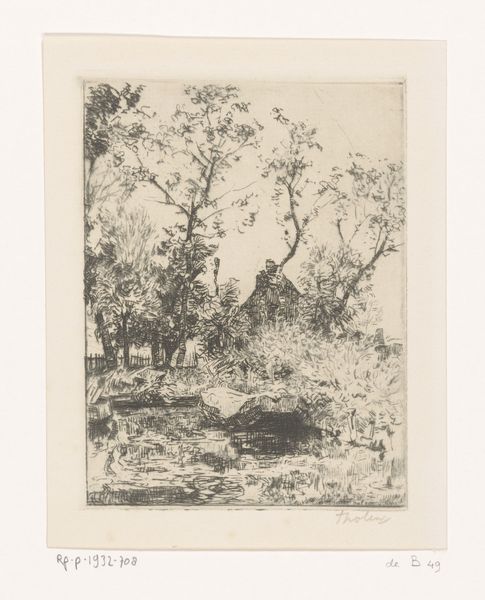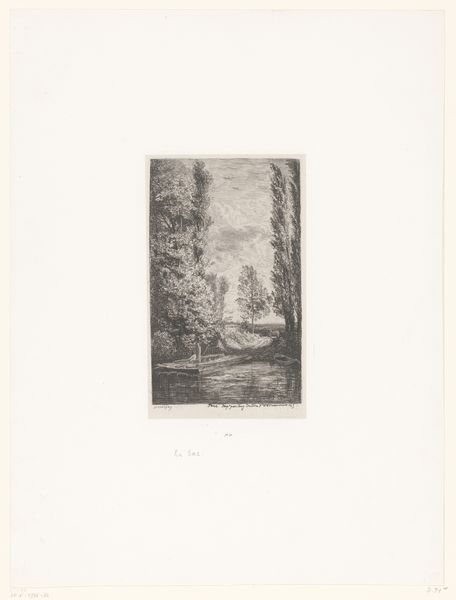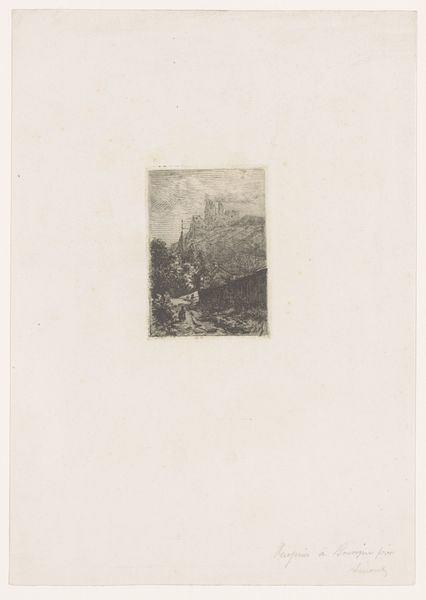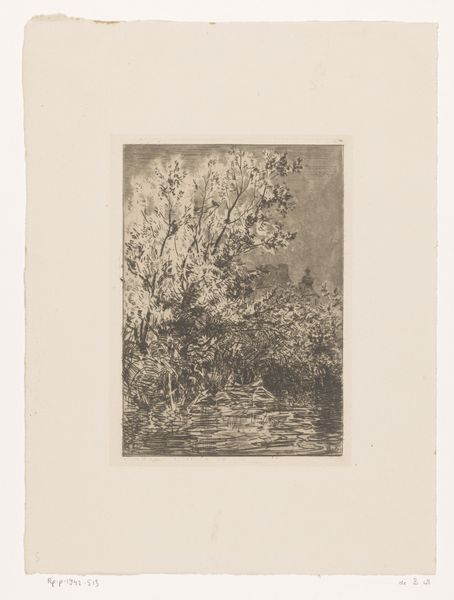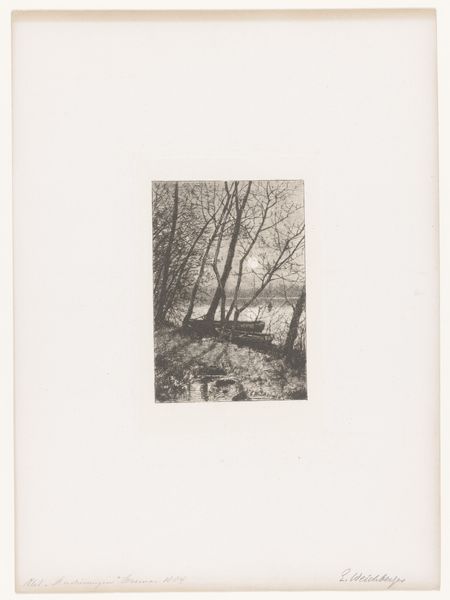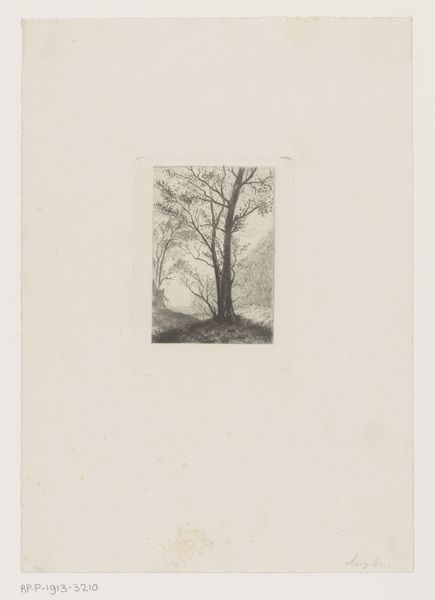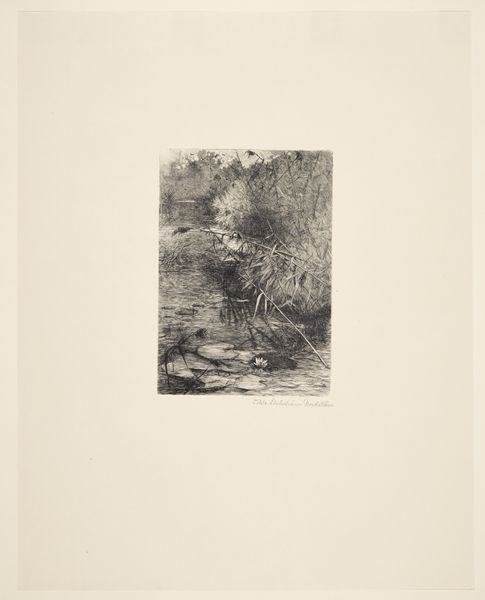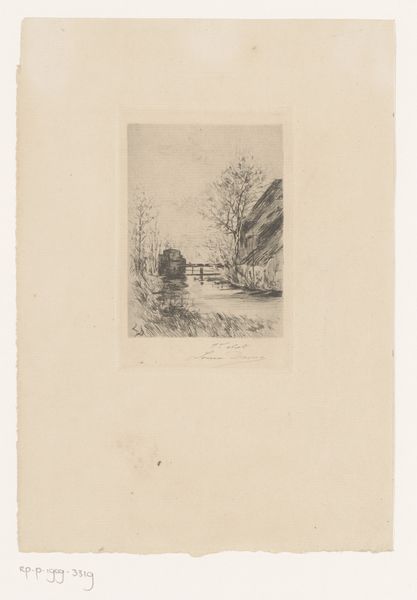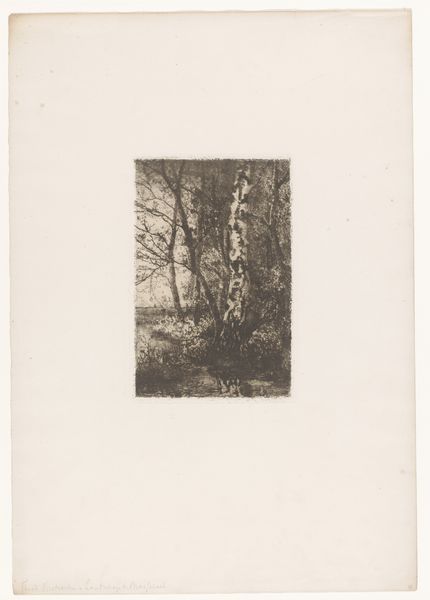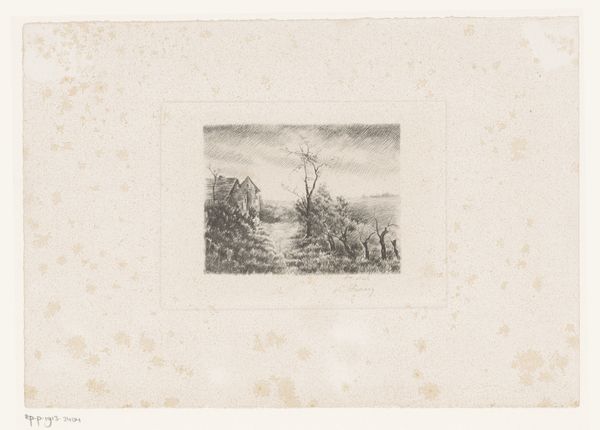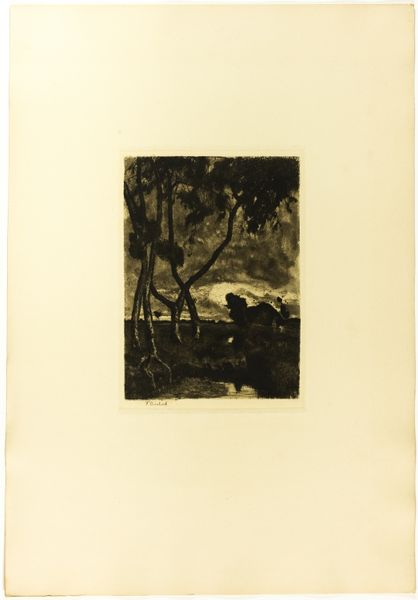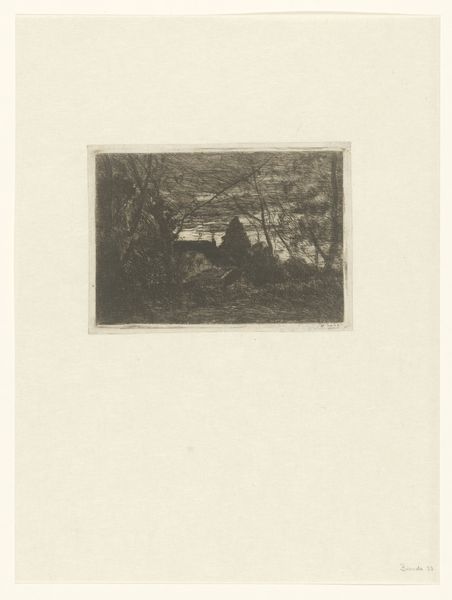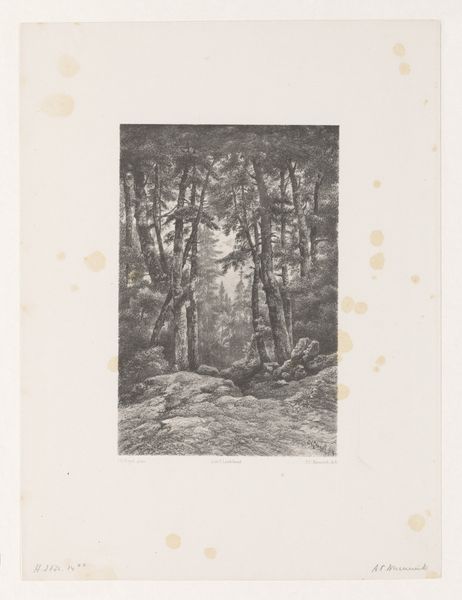
print, etching, paper
#
dutch-golden-age
# print
#
etching
#
landscape
#
paper
#
realism
Dimensions: height 140 mm, width 107 mm
Copyright: Rijks Museum: Open Domain
Editor: We’re looking at Willem Bastiaan Tholen's etching "Sloot met schuit, daarachter bomen en een huis," or "Ditch with a boat, behind it trees and a house," created sometime between 1870 and 1931. It’s a small, intimate piece, but there’s a quiet stillness to it that really draws me in. How do you see this artwork functioning within its historical context? Curator: It’s fascinating to consider this work within the context of late 19th and early 20th century Dutch art. Etchings like this were part of a larger printmaking boom, weren't they? Consider how this allowed artists to disseminate images and ideas to a wider audience, far beyond the elite circles who could afford original paintings. What does this accessibility mean, politically? Editor: That’s a really good point. So, the affordability of prints democratized art to some extent. I guess everyday people would be seeing images they wouldn't normally see. Did that shift how artists thought about their subjects? Curator: Precisely! Tholen's choice of a seemingly mundane scene - a ditch, a boat, some trees - becomes significant. These aren't heroic historical paintings or portraits of the wealthy; they're glimpses into the everyday lives of ordinary people. But did that reflect a shift in artistic values, and possibly, a broader social consciousness? Were artists aiming for something more 'real'? Editor: Definitely more real, almost… relatable. And maybe a little radical to depict these scenes? Curator: "Radical" is a strong word, but it speaks to the power of imagery. By focusing on the local and the ordinary, artists like Tholen were implicitly valuing those experiences. It's worth asking how these kinds of images, circulated widely through prints, contributed to a sense of national identity or even to the recognition of a shared, common life? Editor: I never thought of it that way, it almost humanizes art. I can see that social message and connection now! Curator: And, by questioning the traditional role of art and audience we appreciate it more deeply.
Comments
No comments
Be the first to comment and join the conversation on the ultimate creative platform.
